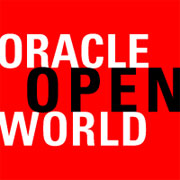
I spent last week at Oracle’s customer event, OpenWorld 2017, in San Francisco. When I wasn’t drinking from an information fire hose, it was alternately fascinating and exhausting.
There were major announcements in database, blockchain, artificial intelligence, cybersecurity, and other stuff I’m associated with only tangentially. For instance, my eyes glaze over when they start talking about bare metal servers and going serverless, so I’ll limit my observations here to database and security, with a few dashes of other things.
BYOL Party
This OpenWorld was primarily a coming-out party of sorts: The culmination of billions of dollars of investments in advanced technologies became unavoidably visible. From here on, Oracle might still support its legacy customers — but make no mistake, they are legacy.
The future, at a minimum, is about moving the data center to the cloud and moving traditional licenses there. Oracle even has a name for that practice: “BYOL,” or “bring your own license.”
Oracle has made that task as easy as it can be. I spoke with a number of customers who had done it or were in the final stages, who were pleased with the experience.
We don’t often think about it if we keep to the big picture, but there are a lot of old systems in the enterprise that need to be replaced because they no longer support their missions. There is no better indication that the next few years will be full of stories about cloud migration.
The key to successful and necessary transfer to the cloud is 18c, Oracle’s autonomous database. The new product, which will be available by end of year, is supposed to self-provision, self-maintain and self-patch while running, thus eliminating the need for most downtime.
CTO and founder Larry Ellison said that it takes an average of 13 to 14 months from the time a patch becomes available to when it is installed in a majority of customer shops. If a patch covers a security problem, that gap gives bad guys a huge amount of time to steal data, which has become epidemic.
Package Deal
As Ellison said in his opening night keynote, “People are going to get better at stealing data, and we have to get better at protecting it.” Fair point. The database will be a big part of that protection, along with some semi-autonomous security software (that will become autonomous soon enough). Both products rely on Oracle’s AI and machine learning tools, as well as advanced database hardware.
That’s the catch, but it seems eminently reasonable: You have to be on Oracle gear to get the full benefits of the software’s power. Actually, it’s less of a catch than you might think. While there are enterprises that are big enough to need and to purchase the hardware, many customers — if not most — will receive the full benefits of Oracle’s technology as consumers of its cloud services. So, many of these announcements rightly can be seen as further inducements to move to the cloud.
Ellison is fond of saying, “You can get all of this, but you have to be willing to pay less.”
That’s fair if you’re looking at the monthly or annual subscription charge, but one suspects that over time many companies will be paying more overall. There’s the issue of refresh, which many companies avoid but which is a standard part of the cloud. We’ll see — in the end, you get what you pay for.
Blockchain Benefits
Oracle also announced a foray into blockchain, the distributed ledger technology that provides greatly enhanced security, speed and transparency to inter- and intra-company transactions. For instance, you soon will be able to use blockchain to track the provenance of parts in a supply chain. One can only hope that credit reporting adopts similar safeguards in the future.
We can also hope to track some customers and their purchases that way, especially to facilitate sales in a B2B setting.
Lastly, there’s AI and data. Whether it’s called “AI” or “machine learning,” the technology requires lots of data to train a model to be useful in predicting the future.
Most enterprise data is deficient in one or more axes of data on hand, so Oracle’s solution has been to provide clean data to augment private data, and deliver the big-picture view that’s needed in sales, marketing, service and a lot more. Oracle also introduced a new set of IoT applications aimed at specific business outcomes. It’s impossible not to say more about this later.
To summarize, Oracle’s long-term investment in cloud technology has begun to pay off. We’ve seen this in the company’s earnings reports over the last year, and OpenWorld was a kind of coming-out party for numerous solutions at literally every level of the software (and hardware) stack.
The company will be a formidable competitor in the years ahead, as its legacy base is up for grabs. All of those customers are going to move to the cloud at some point, and Oracle wants to keep them. Other vendors with good solutions are competing at every level — from Amazon and Google to Microsoft, SAP and Salesforce. This will be fun to watch.






















































